
When it comes to choosing furniture for your home, the decision often comes down to two main factors: quality and cost. With a wide variety of materials available, rubber wood and solid wood are two of the most popular choices, each offering unique benefits. But how do they stack up against each other when it comes to price? Understanding the differences in cost between rubber wood and solid wood furniture can help you make an informed decision that fits both your budget and your design needs.
Key Takeaways
- Rubber wood is cheaper but doesn’t last as long as solid wood, which is more expensive but a better long-term investment.
- Solid wood offers more design flexibility and a richer look, while rubber wood is better for simpler, budget-friendly furniture.
- Rubber wood is more eco-friendly because it’s made from trees no longer used for latex, while solid wood’s impact depends on how it’s sourced.
In this article, we will compare the price of rubber wood vs. solid wood furniture, exploring the factors that influence their costs, durability, and overall value.
Solid Wood: The Classic Choice
At its core, “solid wood” refers to furniture constructed entirely from planks of a single tree species. This purity in material is what gives solid wood its timeless appeal and inherent strength. When choosing solid wood for furniture, some of the most popular options are oak, maple, cherry, and walnut. Oak is known for its durability and prominent grain, making it a go-to choice for high-traffic areas. Maple, a dense and strong hardwood, is perfect for furniture that needs to withstand daily wear and tear, while its smooth grain adapts well to various stains. Cherry, prized for its rich color that deepens over time, is often used in fine furniture and cabinetry, offering a timeless aesthetic.
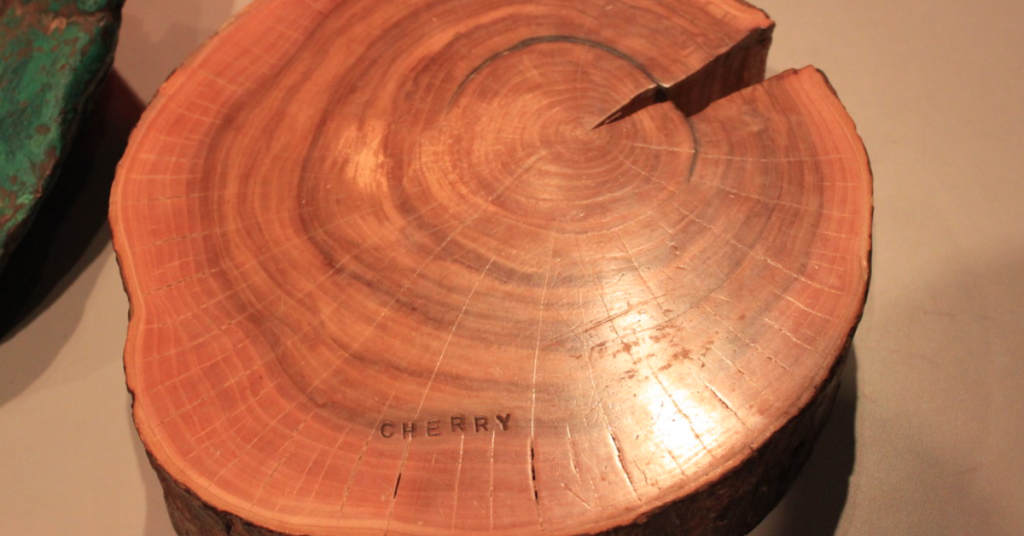
For a more luxurious look, walnut is highly sought after for its deep brown color and elegant grain, often featured in premium furniture pieces. While slightly more affordable, pine is a softwood with a lighter, rustic appeal that’s great for casual or farmhouse-style furniture. Each wood type offers unique characteristics that can influence both the cost and overall look of your furniture.
Daniel Roberts, CEO of Lava Roofing, shares:
“For pieces that needed to withstand long-term wear, like office desks or chairs, we chose solid wood. We found that solid wood furniture lasted about 18% longer on average, which made it more cost-effective over the long haul despite the higher upfront price.”
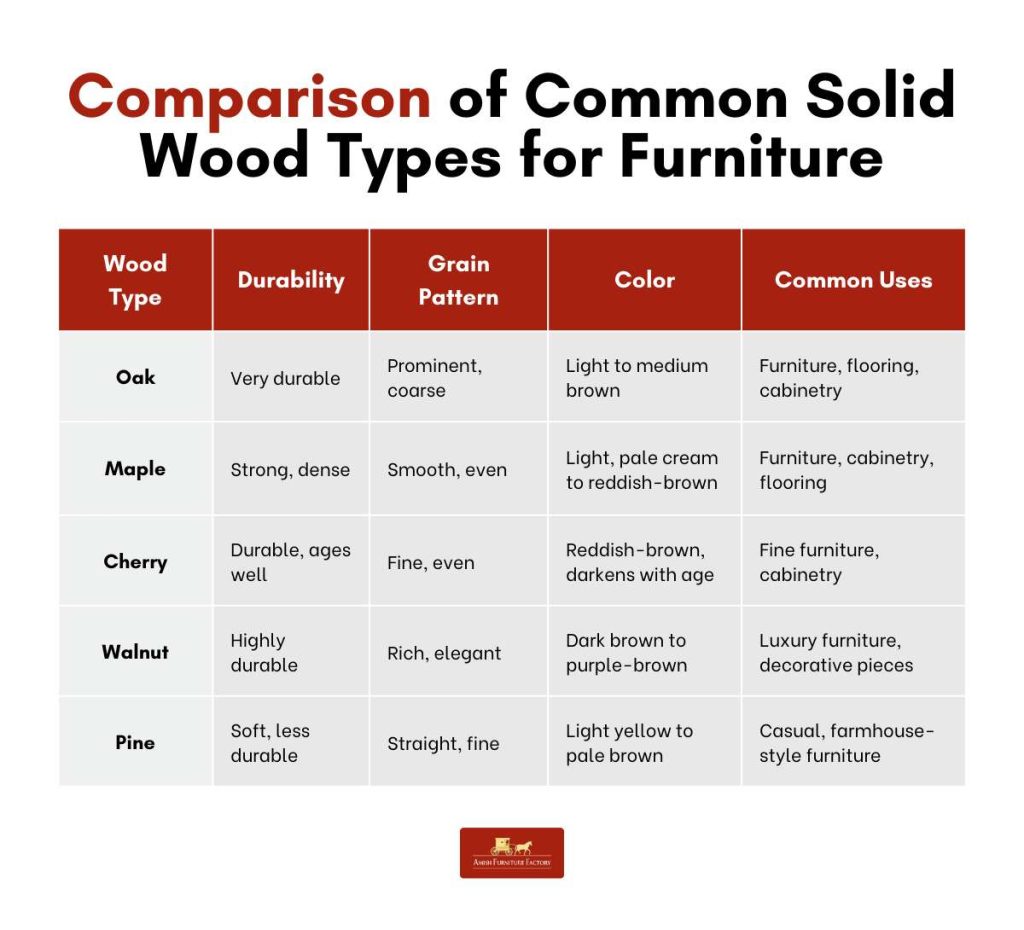
Rubber Wood: The Sustainable Alternative
Rubber wood comes from the Para rubber tree (Hevea brasiliensis), which is primarily grown in tropical regions for latex production. Once a rubber tree reaches the end of its latex-producing lifespan—typically after 25 to 30 years—it is harvested for its wood instead of being discarded. Rubber wood is technically a hardwood, but it falls on the softer side compared to traditional hardwoods like oak or maple. It has a medium density (around 640 kg/m³) and a hardness similar to cherry or pine.
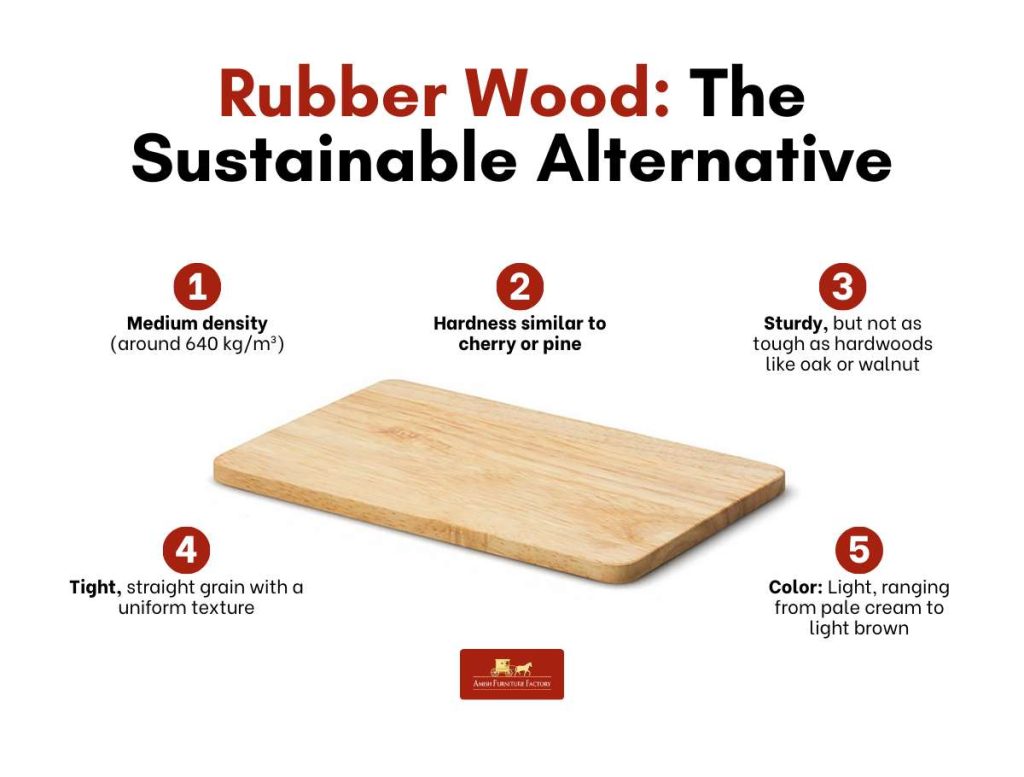
Daniel Roberts adds:
“In terms of value, rubber wood can be an excellent choice for furniture in less demanding environments. For example, when we were outfitting our showroom, we used rubber wood for tables and display pieces because it offers a clean look and is sustainable, all while being more budget-friendly.”
Rubber Wood vs. Solid Wood Furniture: Price Comparison
Let’s break down the key elements that contribute to the price tags of these two distinct furniture options.
Type of Wood
The specific species of solid wood significantly impacts its price. For instance, hardwoods like oak, maple, cherry, and walnut are generally more expensive than softwoods like pine or fir. Rubber wood, on the other hand, is generally priced more consistently, as it comes from a single species.

Manufacturing Processes and Design Complexity
The production of solid wood furniture often involves more intricate and labor-intensive processes. Skilled artisans are required to select, cut, shape, and join the wood, ensuring high-quality craftsmanship. Rubber wood, while also requiring treatment, often involves more automated processes, contributing to lower production costs. Intricate designs, detailed carvings, and complex joinery techniques significantly increase the price of both rubber wood and solid wood furniture..
Brand and Retailer
Established brands with a reputation for quality craftsmanship and design often charge premium prices. Similarly, high-end retailers with luxurious showrooms and personalized service will typically have higher markups than discount retailers or online stores.
Supply and Demand
Market fluctuations in the supply and demand for both rubber wood and solid wood can significantly impact prices. Scarcity of certain wood species, changes in import/export regulations, and fluctuations in consumer demand can all contribute to price volatility.
Location and Shipping
Local wood availability dramatically impacts costs. If a certain type of solid wood is harvested locally, it will be much cheaper than a wood that must be shipped from overseas. Also, shipping heavy solid wood furniture long distances adds great expense to the consumer. Rubber wood is mainly produced in Southeast Asia, so shipping costs will be reflected in the final price of the furniture.
Here’s a table comparing estimated price ranges for common furniture items in rubber wood and various solid woods:
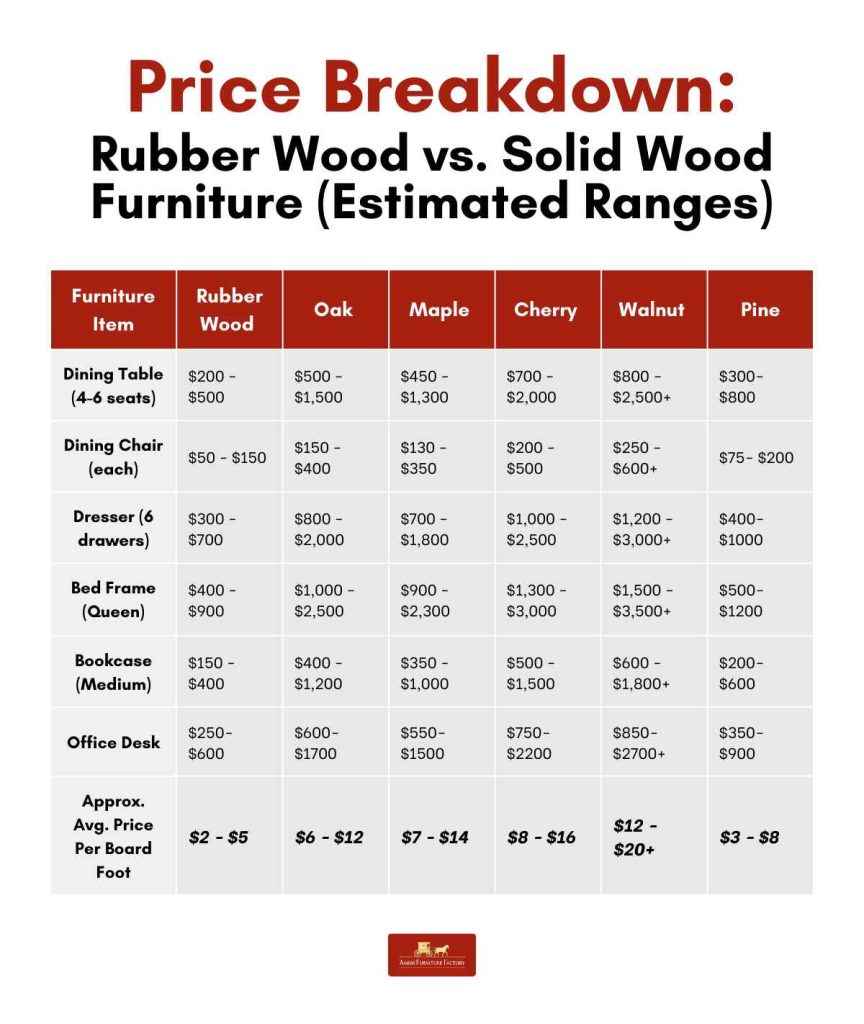
Discover the lasting elegance of genuine wood. Explore our selection of solid wood office furniture sets and elevate your workspace today.
Rubber vs. Solid Wood: Quality, Durability, and Aesthetics
When comparing rubber wood and solid wood, there are notable differences in quality, durability, and aesthetics. Solid wood offers exceptional durability and a timeless look, making it ideal for long-lasting furniture. While rubber wood is durable enough for everyday use when properly treated, it doesn’t match the long-term resilience of dense hardwoods. Solid wood also allows for intricate craftsmanship and detailed designs, contributing to its premium feel, while rubber wood is valued for its affordability and workability, making it a popular choice for various furniture styles. Ultimately, the decision comes down to balancing budget, durability needs, and aesthetic preferences.
Brandi Simon of TX Home Buying Pros notes:
“Choosing rubber wood might seem cost-efficient because it tends to be less expensive and manageable, but when you consider the longevity aspect, solid wood often proves to be a more lasting investment.”
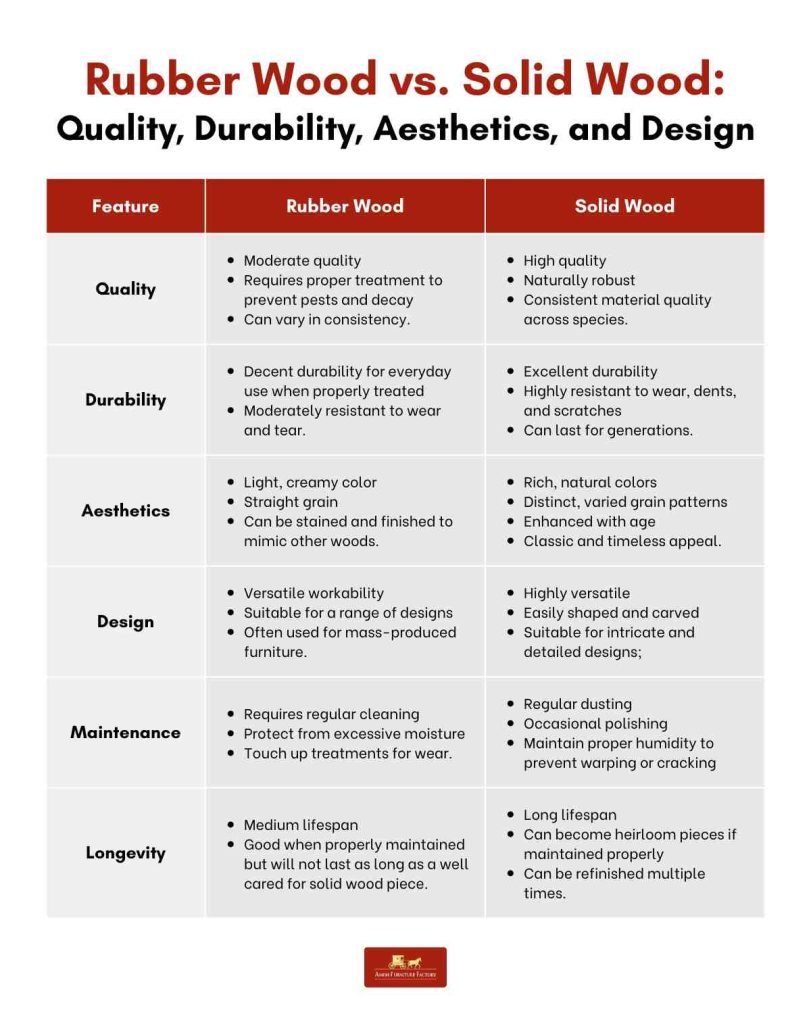
Sustainability and Environmental Impact
Rubber wood stands out for its sustainability, as it’s a byproduct of latex production, using trees at the end of their primary lifespan. Solid wood, while high-quality, has a more complex environmental impact depending on sourcing practices. Sustainably harvested wood, certified by the Forest Stewardship Council (FSC), ensures responsible forest management.
Pablo Cavalcante, owner of Legacy Countertops, explains:
“Rubber wood is often chosen for its eco-friendly processing, which can save costs in manufacturing. However, solid wood demonstrates superior longevity, which makes it a valuable investment in furniture that stands the test of time. These advantages demonstrate why material selection matters greatly.”
Conclusion: Making the Right Choice
Choosing between rubber wood and solid wood furniture ultimately depends on your individual needs, budget, and priorities. If affordability and sustainability are paramount, rubber wood presents a compelling option, offering decent durability and a lighter environmental footprint. However, if you prioritize longevity, timeless aesthetics, and the potential for appreciating value, solid wood remains the classic choice. Consider your lifestyle, the intended use of the furniture, and your long-term vision for your home.
FAQs
Is rubber wood furniture durable?
Yes, rubber wood furniture is reasonably durable for everyday use, especially when properly treated to prevent insect infestation and decay. However, it may not be as resistant to dents and scratches as some denser hardwoods.
How can I identify high quality solid wood furniture?
To identify quality wood, look for consistent grain patterns, sturdy joinery, and a smooth, even finish. High-quality furniture from solid wood will often have visible grain throughout, even on the underside and inside drawers.
Are there specific maintenance requirements for rubber wood furniture?
Yes, rubber wood furniture should be kept clean and dry, as it can be susceptible to moisture damage. Regular dusting and occasional polishing are recommended.
What factors contribute to the higher cost of solid wood furniture?
The higher cost of solid wood furniture is due to factors like the scarcity of certain wood species, labor-intensive manufacturing processes, intricate designs, brand reputation, and the potential for long-term appreciation in value.
